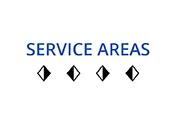Frequently Asked Roofing Questions
Can I do the work myself?
Most work should not be done yourself. Professional roofing contractors are trained to safely and efficiently repair or replace roof systems. You can damage your roof system by using improper roofing techniques and severely injure yourself by falling off or through the roof. Maintenance performed by home and building owners should be confined to inspecting roof systems during the fall and spring to check for cracked or curling shingles and cleaning gutters filled with dead leaves and other debris. If you must inspect your roof system yourself, use a firmly braced or tied-off ladder equipped with rubber safety feet. Wear rubber-soled shoes and stay on the ladder (and off the roof system), if possible.
How can a home owner recognize when a roof system has problems?
All too often, roof system problems are discovered after leaking or other serious damage occurs. Periodic (twice-a-year) inspections often can uncover cracked, warped or missing shingles; loose seams and deteriorated flashings; excessive surface granules accumulating in the gutters or downspouts; and other visible signs of roof system problems. Indoors, look for cracked paint, discolored plasterboard and peeling wallpaper as signs of damaged roof areas.
How can I determine my annual roofing cost?
The following formula may help:
Annual Roofing Cost = Total Cost (Materials & Labor)/Life Expectancy of Roof System (years)
How long can I expect my roof system to last?
Most new roof systems are designed to provide useful service for about 20 years. Some roof system types, such as slate, clay tile and certain metal (e.g., copper) systems, can last longer. Actual roof system life span is determined by a number of factors, including local climatic and environmental conditions, proper building and roof system design, material quality and suitability, proper application and adequate roof maintenance. Roofing product manufacturers offer a variety of warranties on their products. Take a close look at those warranties to see what responsibilities and financial obligations manufacturers will assume if their products fail to reach their expected lives.
How will you protect my flowers and my lawn?
We use tarps and plywood to cover your plants. In addition to proper clean up we also do a magnetic sweep of the yard and driveway to pick up all the nails.
What color will my flashing be?
We will install either black or brown flashing depending on the color of the new shingles. These are the standard colors used by the roofing industry today. The existing flashing on your home is most likely faded. It is important to know that both the new shingle color and the new flashing will be much more vibrant than what you have now. If the new colors seem bold, don’t worry, the will fade and become normal to you pretty quick.
What else should I know?
It is best to take a look at a lot of roofs to see what you like and don’t like prior to finalizing a contract. Look at the details of the roofs. Make notes and even take pictures to ask about the things that are important to you. You should never just assume it will be done certain way. It is better to check to be sure.
What happens to my Direct TV dish during the roofing process?
Most of the time, you will regain your signal and have no problem with your service. Sometimes, however, the dish will not regain signal. If this occurs you will have to contact your service provider to schedule a service call. Style Roofing is not responsible for satellite dishes.
What Happens to my Skylight during the roofing process?
If you have a skylight that needs to be replaced, we will replace it in a manner that impacts your home as little as possible. We are careful to select the correct size and style. We will go over all options with you prior to starting work. It is important to note that skylight shafts are exposed to more heat than other areas of your home. This weakens the drywall and leaves it vulnerable to cracks and nail pops. Even if we do not replace your skylight, it is possible that the drywall can crack during the roof installation because it is weak. Style Roofing is not responsible for drywall cracks or nail pops.
What will a new roof system cost?
The price of a new roof system varies widely, depending on such things as the materials selected, contractor doing the work, home or building, location of the home or building, local labor rates and time of year. To get a good idea of price for your roof system, get three or four proposals from reputable contractors in your area. Keep in mind that price is only one factor, and it must be balanced with the quality of the materials and workmanship. For each roofing material, there are different grades and corresponding prices. There also are a variety of styles and shapes. You need to look at the full product range and make a choice based on your budget and needs. Within the roofing profession, there are different levels of expertise and craftsmanship. Insist on a contractor who is committed to quality work.
When will the material for my roof be delivered?
The shingles will be delivered about a week prior to the start of work. They are delivered by a supply company that will not call before coming. First, they will deliver the shingles and leave them on the ground. Then a crane truck will come and load them on the roof. Once the shingles have been delivered, know that we are close. We will call the day before to let you know we will be coming the following day. Because of the weather, it is impossible to look more than a couple of days out with any certainty.
Will any debris fall into my attic during the roofing process?
Yes. Some dust and small debris will make there way into your attic. It is a good idea to cover all items that are not housed in secure containers. The dust is generally a nuisance and will only affect the items that are not covered.
Will I be able to use my driveway during the roofing process?
During the removal and installation of your roof, work trucks will need access to the driveway. Due to small debris and nails that fall from the roof, it is best to not us the driveway during the workday. All debris will be cleaned up at the end of each workday. It is best to move cars out of the garage before work begins.
Will I need to clean my gutters after a new roof is installed?
No. As part of our final cleanup process we clean all debris from the roof and gutters. We also check to ensure that all gutters are fastened correctly and we refasten any section that is not up to par.
Should I be home while my roof is being replaced?
Feel free to stay home and watch the work being done. We will answer any questions you have during this process. It is not necessary, however, that you be home. It is very loud and many of our customers have opted to spend the day elsewhere.











